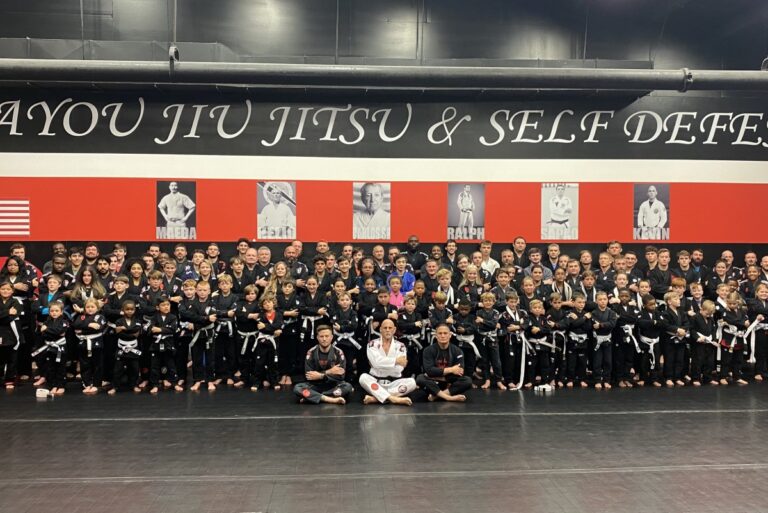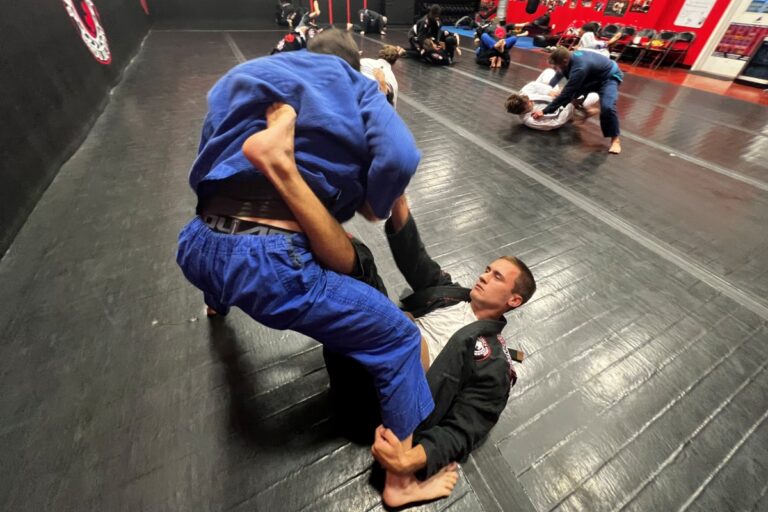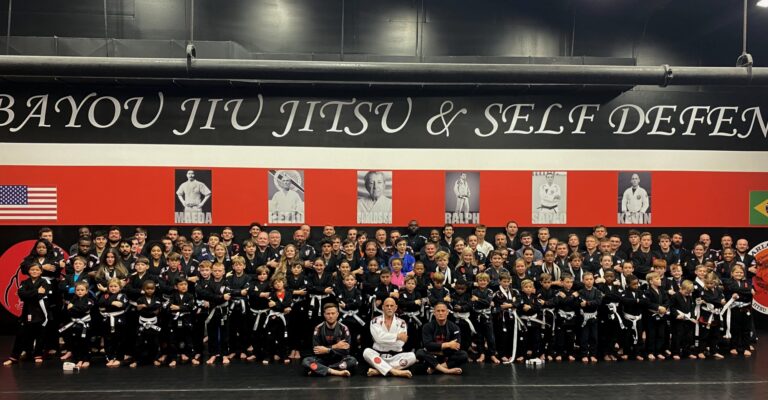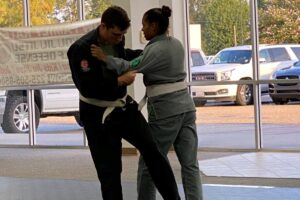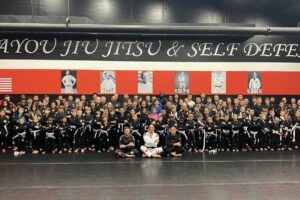Kids martial arts, including Brazilian Jiu-Jitsu (BJJ), are popular and beneficial activities for children. Martial arts programs designed specifically for...
Jiu Jitsu
Brazilian Jiu-Jitsu (BJJ) is a martial art and combat sport that focuses on ground fighting and submission grappling. Developed from judo and traditional Japanese jiu-jitsu, BJJ gained prominence in Brazil and has since become a popular and widespread martial art globally. Here’s an overview of the sport:
Principles and Techniques:
- Ground Fighting:
- BJJ places a significant emphasis on ground fighting, where practitioners aim to control and submit their opponents. Matches often start standing, but the majority of the action takes place on the ground.
- Submission Grappling:
- The primary objective in BJJ is to submit an opponent through joint locks or chokeholds. Submissions can target various joints (e.g., armlocks, leglocks) or involve restricting an opponent’s air or blood supply through chokes.
- Positional Control:
- Practitioners learn to achieve dominant positions such as mounts, back mounts, side control, and guard, from which they can control and submit their opponents effectively.
- Leverage and Technique:
- BJJ emphasizes the use of leverage and technique over brute strength. This allows smaller individuals to overcome larger opponents through proper body positioning, leverage, and precision.
Rules and Scoring:
- Points System:
- BJJ matches are scored based on points awarded for achieving dominant positions and executing controlled techniques. Common point-scoring positions include passing the guard, achieving mount, and taking an opponent’s back.
- Submissions:
- The primary objective is to submit the opponent, and successful submissions lead to an immediate victory. Common submissions include joint locks (armbars, kimuras) and chokes (rear naked choke, guillotine).
- Match Duration:
- BJJ matches for adults typically last between 5 to 10 minutes, depending on the competition and belt level. If neither competitor achieves a submission, the winner is determined by points.
Belt System:
- Progression:
- BJJ uses a colored belt system to signify a practitioner’s skill level and experience. The order of belts, from beginner to advanced, is typically white, blue, purple, brown, and black.
- Promotion Criteria:
- Belt promotions are based on a combination of technical proficiency, mat experience, and time spent training. Promotion criteria can vary between academies and organizations.
Competitions and Tournaments:
- Gi and No-Gi:
- BJJ competitions occur in two formats: gi and no-gi. Gi matches involve practitioners wearing traditional martial arts uniforms (kimono), while no-gi matches involve grappling without the traditional uniform.
- Tournaments:
- BJJ tournaments bring together practitioners from various academies to compete in a bracket-style format. Competitors aim to advance through rounds by accumulating points or securing submissions.
Culture and Lifestyle:
- Respect and Camaraderie:
- BJJ places a strong emphasis on respect for training partners and opponents. The culture encourages mutual growth, and practitioners often form tight-knit communities.
- Lifestyle:
- Many BJJ enthusiasts adopt the sport as a lifestyle, incorporating principles of discipline, fitness, and personal development into their daily routines.
In summary, Brazilian Jiu-Jitsu is a dynamic and technical martial art that offers a unique approach to self-defense, physical fitness, and personal growth. With a focus on ground fighting and submissions, BJJ has gained widespread popularity as both a sport and a way of life.
What is Brazilian Jiu Jitsu? Are you curious about Brazilian Jiu-Jitsu, also known as BJJ? Brazilian Jiu Jitsu is a...
Adult Martial Arts Classes and Lessons Adult martial arts, including Brazilian Jiu-Jitsu (BJJ), are popular and diverse activities that cater...
Asking someone to describe Jiu Jitsu is relatively common for someone who is thinking about joining a local Jiu Jitsu...
MARTIAL ARTS ACADEMY Bayou Jiu Jitsu is a friendly martial arts academy with loctions in Baton Rouge and Central, Louisiana....


